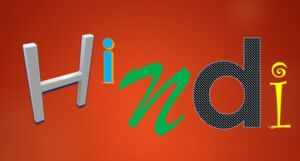- The language is actually called Hindi-Urdu, or Hindustani, but most speakers don’t know that. If you ask them for help, they’ll either scare or bore the hell out of you with the whole Hindi-Urdu fiasco.
- The language as a whole has two very different scripts used for writing (Devanagiri, and Nastaliq). Scripts don’t add anything to the language, but do hinder learning, since all your learning materials will insist upon these.
- In practice, most younger urban people use the Roman script to read and write Hindi-Urdu (think texting).
- Not nearly enough resources out there in English. Probably less still in any other language.
- If you don’t know another Indo-Aryan language, Hindi-Urdu can be highly idiomatic, and the formal varieties that are taught in schools and most books (Modern Standard Hindi and Modern Standard Urdu) are very artificial.
- Moreover, there is not that much global content in Hindi-Urdu, so it may be hard to keep yourself interested, unless you’re already interested in it for some reason (there are lots of good reasons to be).
- Voiced aspirates are known to be hard to pronounce. Not a lot of non-Indo-Aryan languages have those.
So what is easy about learning Hindi?
Hindi pronunciation is much easier.
Hindi is a phonetic language. It sounds like it is written, which is a big plus in learning any language. The downside for learners is that there are sounds in Hindi that English speakers won’t recognize. They are made by adding an h to sounds we do recognize. So, there is a da sound and a dha, a ka sound and a kha, etc.
In addition to it being difficult to hear these nuanced differences — or to say them properly – Devanagari is romanized with seemingly random variations. Dal, a famous dish made of lentils, is seen in English spelled as dal, daal, or dahl. In Hindi, it’s दाल, which is made up of “da”, “aa” and “la”, or द आ ल. Use Devanagari and you’ll be certain you have exactly the right word and spelling.






